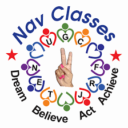Blogs:
- Definition: Online journals or diaries with posts in reverse-chronological order, often allowing reader comments.
- Uses: Publishing, reflecting on work, seeking opinions, analytical writing, networking.
- Updating: Posts are updated at the author’s discretion.
- Ownership, authors: Owned by an individual or group, with single or multiple contributors.
- Timeline: Posts and comments in reverse chronological order.
- Content: Typically author’s opinion, reportage, or news with optional reader comments.
- Links: Contains links to other blog posts, comments, and online resources.
- Development: Ongoing recording or reporting.
- Communication: One-to-many posts, many-to-one comments.
- Structure: Reverse chronological posts, followed by threaded comments.
- Media: Usually text, can include images, video, and sound.
Wikis:
- Definition: Easily editable web pages allowing collaborative content creation.
- Uses: Peer editing, creating glossaries, brainstorming, shared knowledge base.
- Updating: Real-time updates by anyone.
- Ownership, authors: Owned and edited by a group, with many contributors.
- Timeline: Article’s publication date matters less, always a work in progress.
- Content: Represents consensus, user-generated content initiated by instructors.
- Links: Important for building connections to other wiki pages and resources.
- Development: Continually growing and developing.
- Communication: Many-to-many communication.
- Structure: Up-to-date content with viewable history.
- Media: Usually text, can include images, video, and sound.
Forums:
- Definition: Message boards for starting discussions and responding to topics.
- Uses: Help facility, hosting online tutorials, presenting and seeking feedback, exploring views.
- Updating: Asynchronous posting at any time.
- Ownership, authors: Owned by administrators, moderated, multiple authors contribute to threads.
- Timeline: Posts presented chronologically, making conversations followable.
- Content: User-generated content, exchange of ideas and views.
- Links: Posts can contain links to online resources.
- Development: Users shape discussions according to their interests.
- Communication: Many-to-many communication.
- Structure: Threaded discussions flow chronologically.
- Media: Text-driven, limited media embedding; some forums allow avatars for personalization.
| Basis | Blog | Wiki | Forum |
|---|---|---|---|
| Definition | An online journal with posts in reverse-chronological order and reader comments. | Easily editable web pages allowing collaborative content creation. | A message board for starting discussions and responding to topics. |
| Uses | Publishing, seeking opinions, analytical writing, networking. | Peer editing, creating glossaries, brainstorming, shared knowledge base. | Help facility, tutorials, presenting and seeking feedback, exploring views. |
| Updating | Updated at the author’s discretion. | Real-time updates by anyone. | Asynchronous posting at any time. |
| Ownership, authors | Owned by an individual, with single or multiple contributors. | Owned and edited by a group, updated by many contributors. | Owned by administrators, moderated, multiple authors contribute to threads. |
| Timeline | Posts and comments in reverse chronological order. | Article’s publication date matters less, always a work in progress. | Posts presented chronologically, making conversation followable. |
| Content | Author’s opinion or reportage, followed by optional comments. | Articles represent consensus, with user-generated content initiated by instructors. | User-generated content, exchange of ideas and views. |
| Links | Contains links to other blog posts, comments, and online resources. | Links important for building connections to other wiki pages and resources. | Posts can contain links to online resources. |
| Development | Ongoing recording or reporting. | Continually growing and developing. | Users shape discussions according to their interests. |
| Communication | One-to-many posts, many-to-one comments. | Many-to-many communication. | Many-to-many communication. |
| Structure | Reverse chronological posts, followed by threaded comments. | Up-to-date content with viewable history. | Threaded discussions flow chronologically. |
| Media | Usually text, can contain images, video, and sound. | Usually text, can contain images, video, and sound. | Text-driven, limited media embedding. |
| Levels of access | Different access levels, initial post editable by owner. | Private, public, semi-access, limited to designated group. | Varied access levels, attribution key. |
| Attribution of contributors | Blog owner sets up using their name or pseudonym. | Editing can be anonymous, focus on the product, not contributor. | Attribution is a key feature for direct conversations. |
ब्लॉग:
परिभाषा: विपरीत-कालानुक्रमिक क्रम में पोस्ट वाली ऑनलाइन पत्रिकाएँ या डायरियाँ, जो अक्सर पाठक टिप्पणियों की अनुमति देती हैं।
उपयोग: प्रकाशन, काम पर चिंतन, राय मांगना, विश्लेषणात्मक लेखन, नेटवर्किंग।
अद्यतन करना: पोस्ट लेखक के विवेक पर अद्यतन किए जाते हैं।
स्वामित्व, लेखक: एकल या एकाधिक योगदानकर्ताओं के साथ किसी व्यक्ति या समूह के स्वामित्व में।
समयरेखा: पोस्ट और टिप्पणियाँ उल्टे कालानुक्रमिक क्रम में।
सामग्री: आमतौर पर लेखक की राय, रिपोर्ताज, या वैकल्पिक पाठक टिप्पणियों के साथ समाचार।
लिंक: इसमें अन्य ब्लॉग पोस्ट, टिप्पणियाँ और ऑनलाइन संसाधनों के लिंक शामिल हैं।
विकास: चल रही रिकॉर्डिंग या रिपोर्टिंग।
संचार: एक-से-अनेक पोस्ट, अनेक-से-एक टिप्पणियाँ।
संरचना: कालानुक्रमिक पोस्टों को उल्टा करें, उसके बाद थ्रेडेड टिप्पणियाँ।
मीडिया: आमतौर पर पाठ में चित्र, वीडियो और ध्वनि शामिल हो सकते हैं।
विकी:
परिभाषा: सहयोगात्मक सामग्री निर्माण की अनुमति देने वाले आसानी से संपादन योग्य वेब पेज।
उपयोग: सहकर्मी संपादन, शब्दावलियाँ बनाना, विचार-मंथन, साझा ज्ञान आधार।
अद्यतन करना: किसी के द्वारा भी वास्तविक समय में अद्यतन।
स्वामित्व, लेखक: कई योगदानकर्ताओं के साथ एक समूह द्वारा स्वामित्व और संपादित।
समयरेखा: लेख की प्रकाशन तिथि कम मायने रखती है, कार्य हमेशा प्रगति पर रहता है।
सामग्री: सर्वसम्मति का प्रतिनिधित्व करती है, प्रशिक्षकों द्वारा शुरू की गई उपयोगकर्ता-जनित सामग्री।
लिंक: अन्य विकी पेजों और संसाधनों से संबंध बनाने के लिए महत्वपूर्ण।
विकास: लगातार बढ़ रहा है और विकास कर रहा है।
संचार: अनेक-से-अनेक संचार।
संरचना: देखने योग्य इतिहास के साथ अद्यतन सामग्री।
मीडिया: आमतौर पर पाठ में चित्र, वीडियो और ध्वनि शामिल हो सकते हैं।
मंच:
परिभाषा: चर्चा शुरू करने और विषयों पर प्रतिक्रिया देने के लिए संदेश बोर्ड।
उपयोग: सहायता सुविधा, ऑनलाइन ट्यूटोरियल होस्ट करना, फीडबैक प्रस्तुत करना और मांगना, विचारों की खोज करना।
अद्यतन करना: किसी भी समय अतुल्यकालिक पोस्टिंग।
स्वामित्व, लेखक: प्रशासकों के स्वामित्व में, संचालित, कई लेखक थ्रेड में योगदान करते हैं।
समयरेखा: पोस्ट कालानुक्रमिक रूप से प्रस्तुत की जाती हैं, जिससे बातचीत को अनुसरणीय बनाया जा सकता है।
सामग्री: उपयोगकर्ता-जनित सामग्री, विचारों और विचारों का आदान-प्रदान।
लिंक: पोस्ट में ऑनलाइन संसाधनों के लिंक हो सकते हैं।
विकास: उपयोगकर्ता अपनी रुचि के अनुसार चर्चाओं को आकार देते हैं।
संचार: अनेक-से-अनेक संचार।
संरचना: थ्रेडेड चर्चाएँ कालानुक्रमिक रूप से प्रवाहित होती हैं।
मीडिया: पाठ-संचालित, सीमित मीडिया एम्बेडिंग; कुछ मंच वैयक्तिकरण के लिए अवतारों की अनुमति देते हैं।

